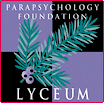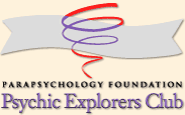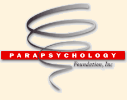The Census of Hallucinations
The following, written by Rosalynd Heywood, is taken from an online excerpt of her book The Sixth Sense published in 1959.
“In 1889 … Henry Sidgwick set on foot a large project to compile a Census of Hallucinations … For his team he chose the two Myers brothers, Frank Podmore, Mrs Sidgwick and Alice Johnson. The main object of the Census was to question a representative section of the public for evidence of telepathy, in particular telepathy which appeared to take the form of waking hallucinations. Dreams were excluded ….
Sidgwick’s team — all volunteers — worked like beavers on the Census for five years. They collected 17,000 replies from members of the public to the question: ‘Had they ever, when awake, had the impression of seeing or hearing or of being touched by anything which, so far as they could discover, was not due to any external cause?’ Nearly 10 per cent of the persons approached answered Yes … The 10 per cent were then put through a friendly third degree, as a result of which it was found that a number of their hallucinations appeared to be veridical: that is, they tallied with distant, more or less contemporary situations, which were at the time unknown to the percipients. Of these, a large proportion were crisis-cases, many of them connected with a death. It now struck the committee that here might be an opportunity for tackling the bogy of chance coincidence in a big way. They would take veridical waking hallucinations occurring within twelve hours either way of the death of the person seen or heard — this was an arbitrary period but they had to impose some limit — as a basis for estimating such coincidences. The probability that any particular person in the British Isles would die on any particular day they worked out to be about one in 19,000. Thus, on that basis, if chance only were involved, no more than one in 19,000 hallucinations should be a death coincidence. They then went through their cases with a tooth comb and an outsize conscience, making almost exaggerated deductions for possible faulty reporting and other errors. But they were still left with a proportion of death coincidences to waking hallucinations that was not one in 19,000 but one in 43, or 440 times the number likely to be caused by chance alone. This, they felt, was satisfactory. And the improbability of chance coincidence was actually greater than they estimated, since the time correspondence was often much closer than twelve hours, and they deliberately took each case as a simple one, whereas there were often a number of coincidences within a case … In the view of Sidgwick's team these results were valuable testimony for ESP on the grounds that if unusual experiences frequently coincided with events unknown to the percipients, it was very likely that one was the cause of the other.”
There were similar smaller scale studies conducted in other countries (e.g., France, the United States). The reference for the British survey is:
Sidgwick, H., Johnson, A., Myers, F.W.H., Podmore, F., & Sidgwick, E.M. (1894). Report on the Census of Hallucinations. Proceedings of the Society for Psychical Research, 10, 25-422.
In addition to an introductory chapter and a conclusion and seven appendixes, the report included the following chapters:
Method of Conducting the Enquiry, and General Results
Discussion of the Trustworthiness of our Results
Hallucinations and Pseudo-Hallucinations
The Relation of Illusions to Hallucinations
Form and Development of Hallucinations
Physiology of Hallucinations
Age, Sex, Heredity, Nationality, and Health
Mental and Nervous Conditions in connection with Hallucinations
Expectancy and Suggestion
Organic Effects accompanying Hallucinations
Death-Coincidences
Chance Coincidence
Veridical Hallucinations Continued: Further Coincidental Cases
Collective Hallucinations
Premonitions and Local Apparitions
Phantasms of the Dead |




